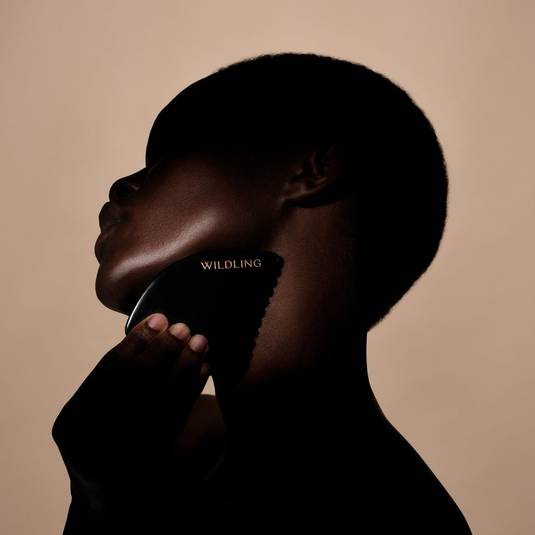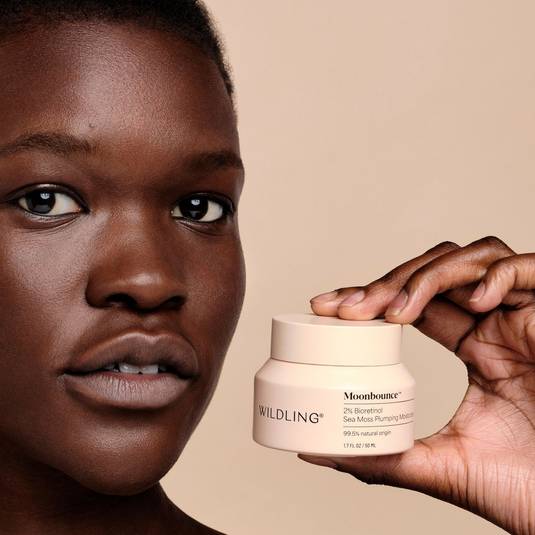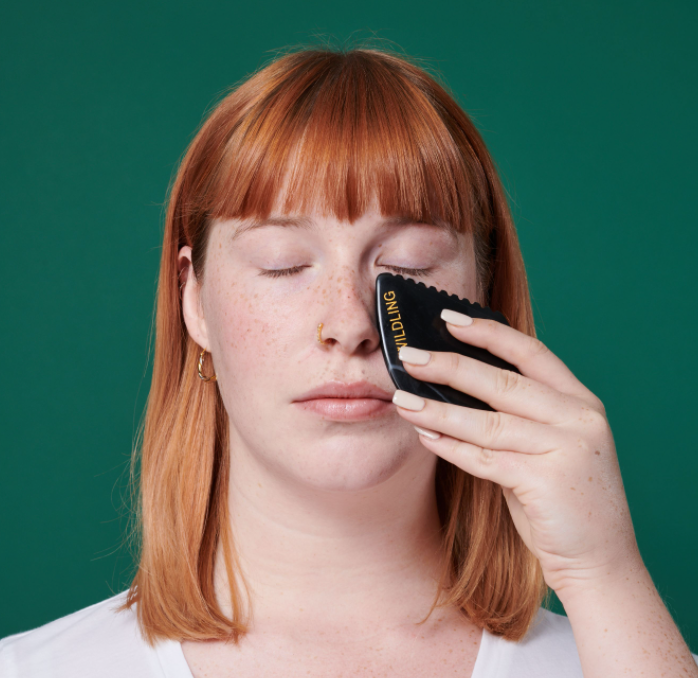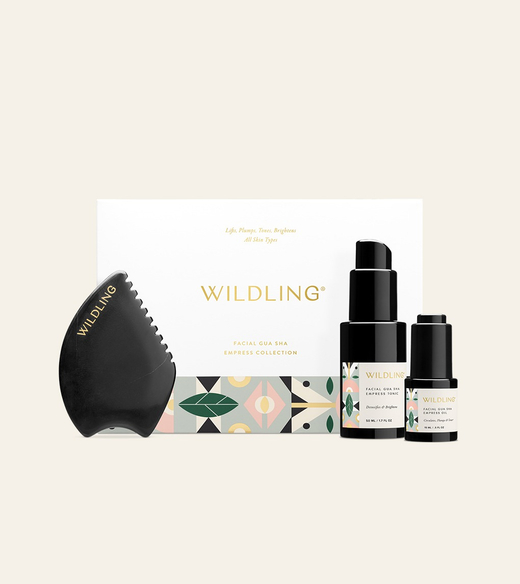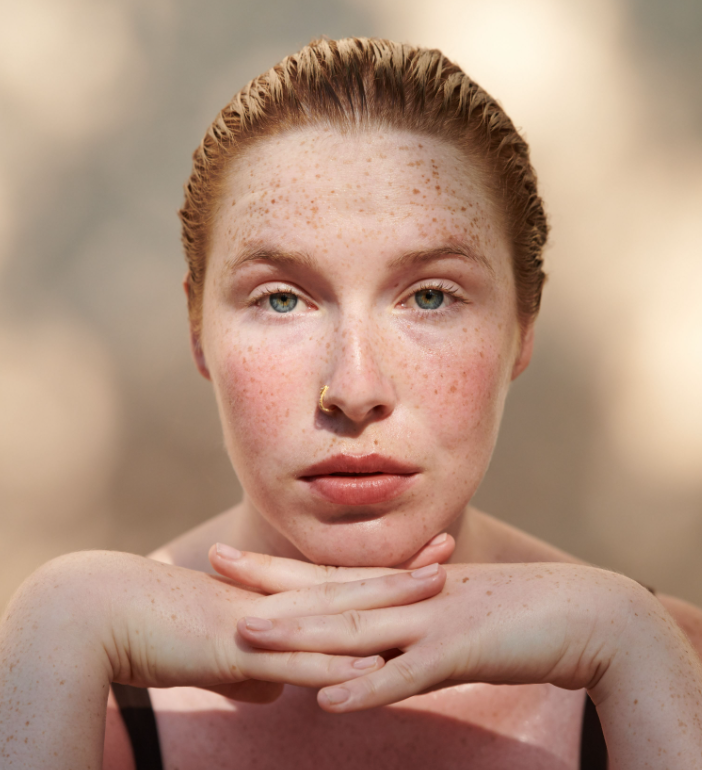Let’s face it: botox and fillers aren’t disappearing anytime soon. But without a doubt, interest in alternative aging treatments that are less invasive and more supportive to the body is rising—and we’re here for it!
In case you haven't heard, facial gua sha is our go-to anti-aging technique and trusty ritual practice. The rest of the beauty world is hopping on board, too, due in large part to the foundational work of gua sha master Britta Plug (one of our founders) of making it accessible through her short and sweet tutorials on the ‘gram. Facial acupuncture is another botox and filler alternative that’s trending up, and Gianna de la Torre (also one of our founders), a licensed acupuncturist who practices it, divulges all her knowledge about points, meridians, and everything else you’d ever want to know in a recent interview.
The latest new alternative to botox and fillers? Facial reflexology. It’s still flying under-the-radar, but not for long. You heard it here first: facial reflexology is about to take the beauty world by storm. It’s already surfacing as an holistic treatment offering in spas as well as from individual practitioners in California and New York as a way to calm stress, rebalance the body, and repair the skin.
WHAT IS FACIAL REFLEXOLOGY?
Facial reflexology, also sometimes called multireflexology depending on the method and teacher being referenced, is a way of treating the skin and body’s imbalances. By using tools that work along meridians and focal areas mapped out on the face, a practitioner will balance the yin and yang energy in your body by way of your face. If it sounds a lot like acupuncture, it kind of is: Professor Bùi Quốc Châu, one of the original facial reflexologists, came up with his own maps and formulas by questioning traditional acupuncture points and experimenting on his patients (many of whom were clinically depressed, and suffered from imbalance) through trial and error, stimulating certain areas of the face with tools instead of needles. The end goal of facial reflexology is to balance yin (too little, or deficient) and yang (too much, or excess) energy.
THE DIEN CHAN ZONEⓇ FACIAL REFLEXOLOGY METHOD BY HELEN BLACK.
Since then, many different schools of thought, educators, and practitioners have emerged in the small but rapidly growing facial reflexology space. One of the most prominent facial reflexology educators, Helen Black, is based out of Edinburgh—and our very own Britta has studied with her. Not to be confused with Dien Chan m/, another method of facial reflexology, the Dien Chan Zone was adapted from ancient Vietnamese rituals and is now taught out of Italy by two therapists who have optimized the technique for skin health and to assuage the concerns of our go-go-go modern lifestyles.
WHAT DOES FACIAL REFLEXOLOGY FEEL LIKE?
Each facial reflexology treatment is as unique as the person receiving it. In other words, don’t even try to anticipate your treatment. What happens during a session also depends on the practitioner, their method, and tools they decide to employ.
Typically, facial reflexology feels like a mix of soothing and invigorating sensations. Some of the tools are smooth and impart a feeling similar to gua sha. Others feel more like mini jade rollers. The more invigorating ones have tiny spikes or pyramids to stimulate the skin and bloodflow. Often, a practitioner will start a session by running a wand over the contours of your face to determine which areas need treatment and use your feedback to inform the tools they use.
BENEFITS OF FACIAL REFLEXOLOGY.
Like facial acupuncture, facial reflexology can be used to address imbalances in the body which, in turn, help to clarify, tone, smooth, and brighten the skin. Yes, please! The skin is always a mirror of how the inner processes of the body are functioning and when taking a holistic approach to skin healing, you can’t treat one without addressing the other.
- Like gua sha, facial reflexology stimulates blood flow, helping to promote a glowing complexion, skin cell renewal, and detoxification. Think vacation vibes.
- Because it works to stimulate blood flow, over time facial reflexology treatments can help improve the appearance of fine lines and wrinkles.
- We hold a lot of tension in our faces! A lot. They’re how we express, and yet the face an area that doesn’t receive a whole lot of love when it comes to touch or massage. Facial reflexology can help release the muscles of the face, facilitating relaxation and stress relief.
- When your practitioner is working on balancing the body and its processes through the face, it may result in a more efficient system that allows you to rest and reset. Read: better sleep and sweeter dreams are ahead.
FACIAL REFLEXOLOGY BOOKS.
If you’re interested in learning more about facial reflexology, these books are a good place to start!
- Facial Reflexology - Dien Chen Zone: A Practical Handbook with Maps and Images by Beatrice Moricoli and Vittorio Bergagnini
- Mirror Medicine: Self-Care Using Dien Chen Zone, an e-book by Helen Black
- Multireflexology Dien Chan: The Original Method of Facial Reflexology
Like facial acupuncture, facial reflexology can be used to address imbalances in the body which, in turn, help to clarify, tone, smooth, and brighten the skin.
